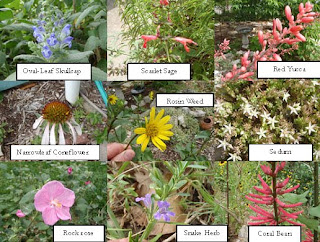This area of the coast, much like the rest of Texas, is in an extended “draught” but my natives are holding their own. Not to say some may wither under the oppressive summer sun but by in large they will be thriving without water when the rest of the block is expending thousands of gallons of water to keep their lawns green. Scarlet sage (Salvia coccinea) will do fine if it remains in the shade as will the beauty berry. My Texas Wild Olive (Cordia boissieri) is in full flower mode and loving the lack of rain. Not a true olive, it is in the Borage Family and is a denizen of the Texas border with Mexico. Plants in the Borage Family include Forget-me-not and Comfrey.
I have 4 Texas persimmons (Diospyros texana) and 2 common persimmons (diospyros virginiana). The Texas persimmons flowered in March and are now producing fruit. For the first time one of the common persimmons is flowering. I believe persimmons self-pollinate. All the fruits are edible. The red buckeye (Aesculus pavia) flowered in February and the fruit will mature all summer into November. The leaves will drop by July. Red Yucca (Hesperaloe parviflora) is a hummingbird magnet at points in the front yard.
The sedum I found those years ago in the hills of San Antonio is cascading over the rock walls. It took a few years to identify it because it’s not listed as occurring in the U.S. I found out what it was when I looked over a list of plants of Mexico – Sedum diffusum. Therefore it’s a new record in the U.S. and I need to get this published.
As I look out my bedroom window I see birds relishing the overflow of the filling of the bird feeder – grackle, cardinal, bluejay, mourning dove and English sparrow. On occasion a hawk will perch in the trees but I don’t know what species it is. No doubt this area is like a bird buffet to it. The nest box I put in the tree was on the verge of habitation by a non-native starling until I lessened the diameter of the entrance. I’m not sure if a Carolina wren or chickadee took advantage of this. Due to the lack of rain I must refill the water containers every 3 days.





1 comment:
I hate bland grass yards. You need to give your neighbors lessons in horticulture. Keep up the fight in Dungpileton! RG in GJ, CO
Post a Comment